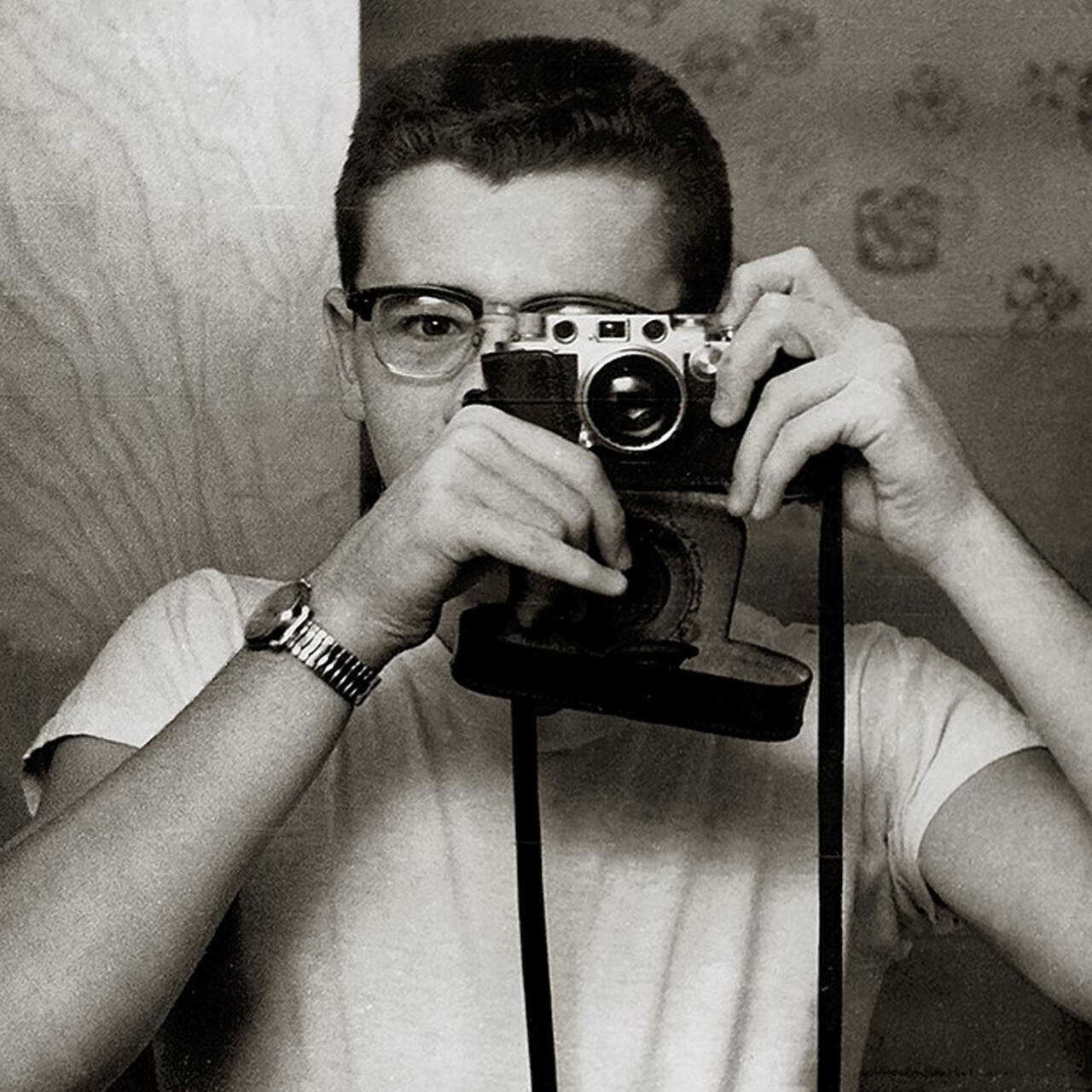Hybrid creatures with prostheses or organic forms jutting out of their bodies – in the upcoming DOUBLE FEATURE artist Eglė Budvytytė turns her attention to lichen as a symbiotic hybrid being and envisions a future in which humanoid beings merge with their environment.
At a time when the word ‘symbiosis’ seems to be on everyone’s lips and phrases such as ‘symbiotic economy,’ ‘value creation through connectivity,’ ‘industrial symbiosis’ or, or course, ‘work-life-blending’ (the symbiosis of life and work) have moved beyond biology and entered PR and manager-speak, the model that previously dominated our lives seems all but forgotten. “Survival of the fittest” was not only the rule of thumb in biology underpinning natural selection in evolution, but also seemed to best explain human economic activity. Today, however, we know that the bulk of the earth’s biomass actually consists of symbiotic systems and that symbiogenesis, in other words the emergence of new cell organelles due to an amalgamation of different species, is a recognized fact. The best-known example of such a symbiosis is lichen, a symbiotic association of fungi and green algae whose properties differ significantly from the individual organisms that make it up. And that already brings us to the world of Eglė Budvytytė’s 2020 video “Songs from the compost: mutating bodies, imploding stars.”
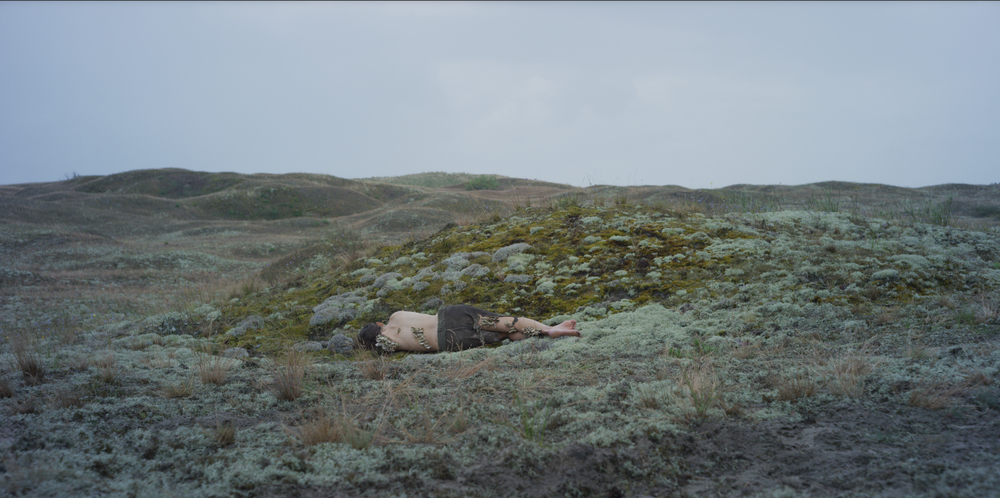
“Hello, I’m a Cyborg”
“We have never been pure. We have never been clean,” digitally distorted voices sing on the soundtrack while a group of young people slowly walk through sundrenched woods. In the next shot the camera carefully scans the ground to show a close-up of the symbiotic lichen that is native to the landscape. A person dressed only in torn pants lies there, and their body like the lichen itself also seems to have formed a bond with another species: fungus-like networks grow out of the person’s legs and back. “Hello, I’m a cyborg, a non-binary alien after gender abolition,” can be heard in the accompanying soundtrack. Hybrid creatures with prostheses or organic forms jutting out of their bodies feature in Eglė Budvytytė’s work, which she filmed with young dancers from a local university on the Curonian Spit, a sandy strip of land in Lithuania. The dancers wear clothes that were created in collaboration with Marija Olšauskaitė and Julija Steponaitytė. The genesis of the clothes: the pants, T-shirts or sweaters in the ground for several weeks and leaving them to compost before taking scissors and sandpaper to them.
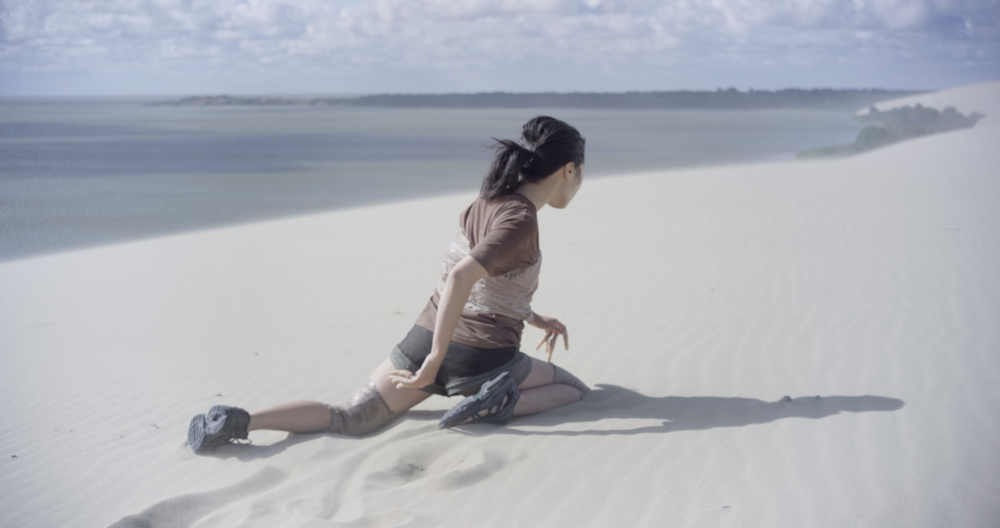
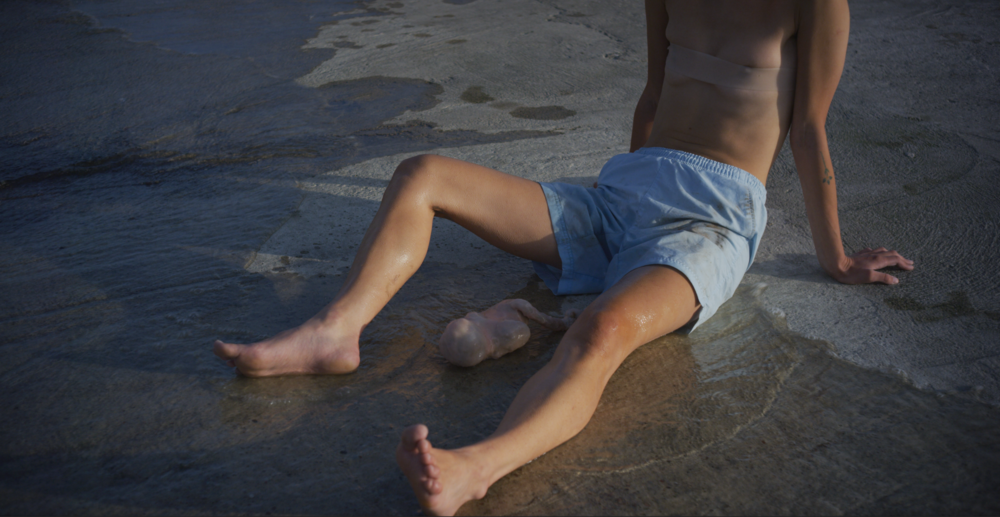
In Eglė Budvytytė’s work, Lithuania’s woodland and coastal landscapes, which are covered in innumerable lichen, serve as a backdrop for a world in which the humanoid creatures seem to have entered into a symbiosis with the environment. A group of dancers move along a strip of sand, close to the ground and contorted, upside down, later lying on the forest floor intertwined with one another or wading through the water as if they were being absorbed in the source of all life. “I am a host, I am being hosted, I am a host hosting,” goes the song collage that plays through the entire length of the film. Text fragments refer to the literary work of O. E. Butler, the first sci-fi author to be awarded a MacArthur Fellowship, who interwove themes such as posthumanism and Afrofuturism in her books. There are also references to scientific works by biologist Lynn Margulis, the main modern advocate of the importance of symbiosis in evolution. “Life did not take over the globe by combat, but by networking,” she once proclaimed, arguing that this meant Darwin’s theory of competition was incomplete. “Songs from the compost: mutating bodies, imploding stars” refers in its very title to the fact that wherever you look from the microcosmic to the macrocosmic level there are symbioses and cooperation, a symphony of transformation, decay and regeneration.
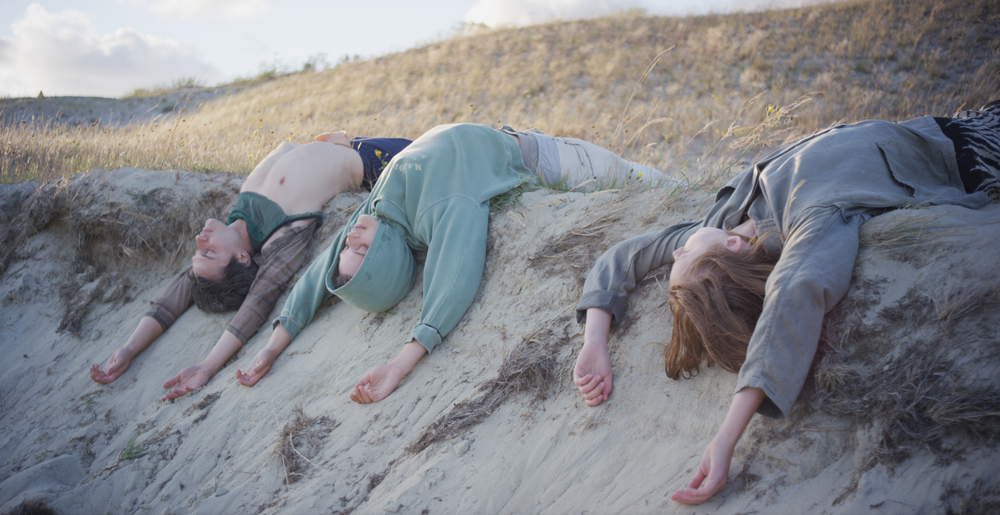
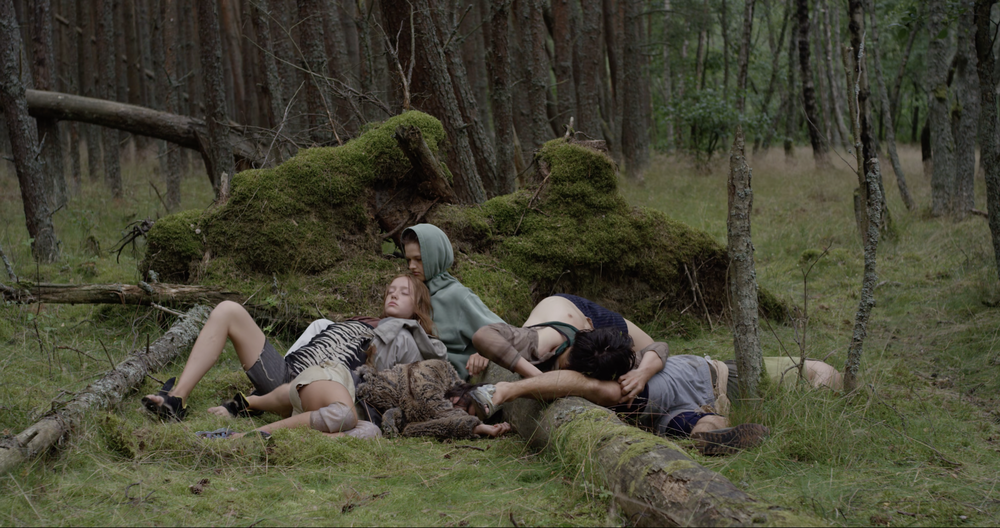
Chris Marker’s “Sans Soleil”
Chris Marker’s “Sans Soleil,” which Eglė Budvytytė has chosen as the second film for the Double Feature, also fluctuates between two extremes, specifically between Japan and Guinea-Bissau in West Africa, “two extreme poles of survival,” as the voiceover puts it. The film is Chris Marker’s late magnum opus (it was even included in the canon of films compiled by the German Federal Agency for Civic Education in 2003): It is in fact a film essay, a travel documentary, a meditation about human memory and personal perception. Embedded in a fictional narrative about a cameraman called Sandor Krasna, whose letters, travelogues, and philosophical reflections are read out on the soundtrack by an unnamed woman, the film shows the self-shot footage of Marker’s fictional alter ego along with archive material from Japan and Guinea-Bissau, Cape Verde and Iceland. “I’ve been round the world several times and now only banality still interests me,” the soundtrack declares at the beginning, while sleeping passengers can be seen on a ferry crossing between Hokkaido and the mainland. In the seeming banality of everyday life between Japanese video game arcades, department stores, and temples or in shots of West African dockworkers and documentary clips from the war of independence in Guinea-Bissau, with “Sans Soleil” Chris Marker develops a deeply personal, humanist form of cinema that succeeds in doing something which makes film at its best so special, namely wresting truths that cannot otherwise be grasped from fiction.







